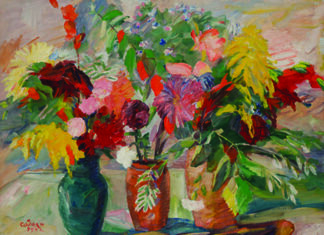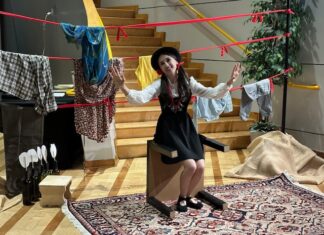By Aram Arkun
Mirror-Spectator Staff
NEW YORK — Two artists teamed with two historians to tackle issues connected with the Ottoman legacy on June 15 at the Pratt Institute in Manhattan. Two of these speakers specifically dealt with Armenian topics, while the other two spoke on broader Ottoman issues. All four were descendants of peoples living in the Ottoman Empire. The plan was for a novel interdisciplinary approach bringing together intellectuals who often work in different spheres and may not even be aware of the value of approaches in other fields.
According to the formal announcement for the event, the speakers were to question “some of the myths or fixed narratives” of the “Ottoman legacy,” and examine the mechanisms of Ottoman imperial control, its relationship to Western colonization and its positive contributions to world culture. They were to discuss how the Ottoman Empire’s “abrupt and violent reformulation into a nation-state affected the linguistic, ethnic, religious, political and other ‘minorities’ in modern Turkey.” Finally, how do the artists involved deal with “the lingering effects of the Empire’s unresolved legacy on contemporary life”? An audience of more than 40 people was present on June 15 — not bad considering that schools were out of session (and most of the attendees were Turks).
The evening event was the third in a series of ongoing public discussions organized in conjunction with the Blind Dates curatorial project directed and co-curated by Neery Melkonian with Defne Ayas. Several years in the making, with a number of forthcoming public events and workshops, this project will culminate in an exhibition consisting of approximately 15 collaborations between Armenian and Turkish as well as other artists who come from the post-Ottoman lands and are matched up by the curators for the first time through actual encounters, hence the name Blind Dates.
The first speaker, Assistant Prof. Christine Philliou of Columbia University, is a historian specializing in the Ottoman Empire of the 18th and 19th centuries. Her forthcoming book, Biography of an Empire, examines changes in Ottoman governance in this period while focusing on the role of the Orthodox Christian Phanariotes. Philliou presented the parable of a play in order to open up a discussion on the rupture with the Ottoman past created in the new Kemalist Republic of Turkey. Refik Halit Karay (1888-1965) published the play “Deli” [Turkish for mad, crazy] as an exile in Aleppo in 1929. An Ottoman gentleman named Maruf Bey wakes up after years of unconsciousness and though now in the new Republic of Turkey, still believes Abdülhamid II is sultan. He is shocked by all the changes in appearance (no beards and mustaches for men, and Western clothing), the changes in roles for women, who attend school and are active in public and play sports, the use of the Latin alphabet and the dominance of Turkish nationalist ideology.









